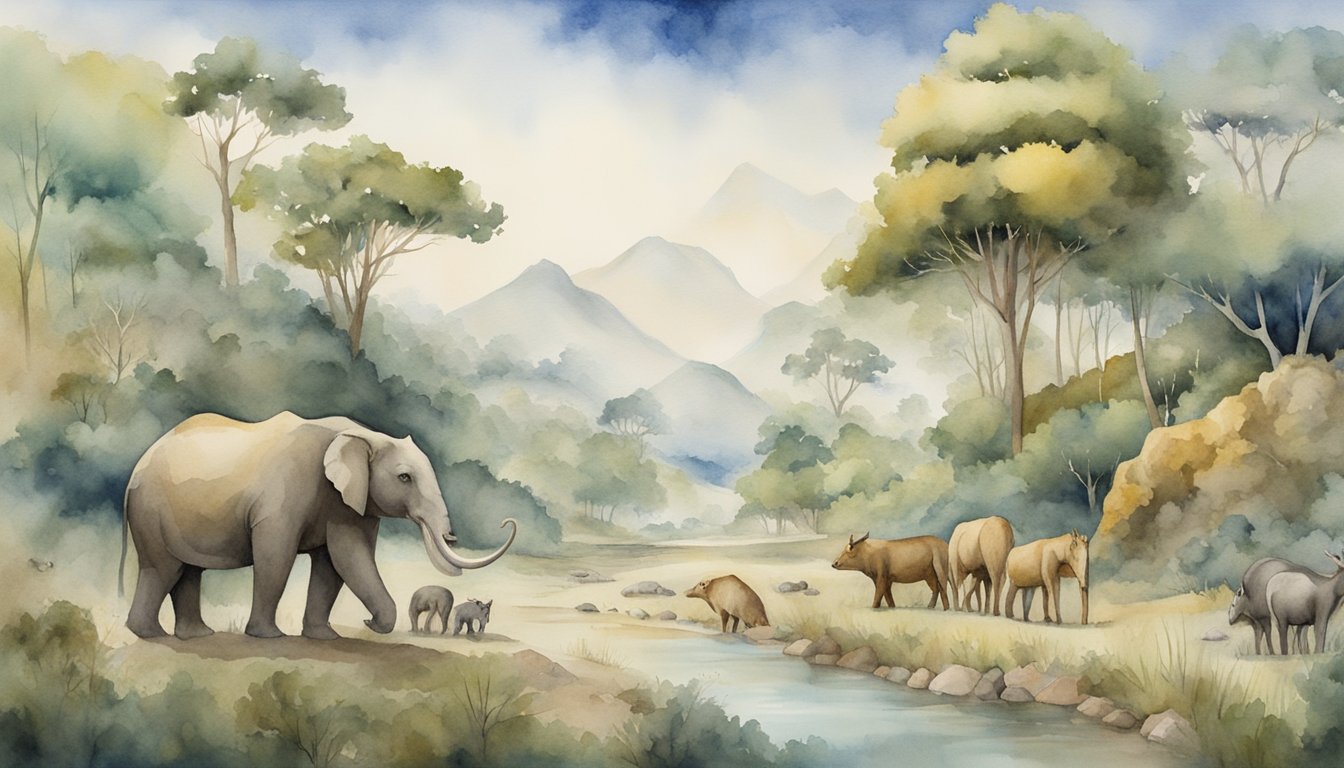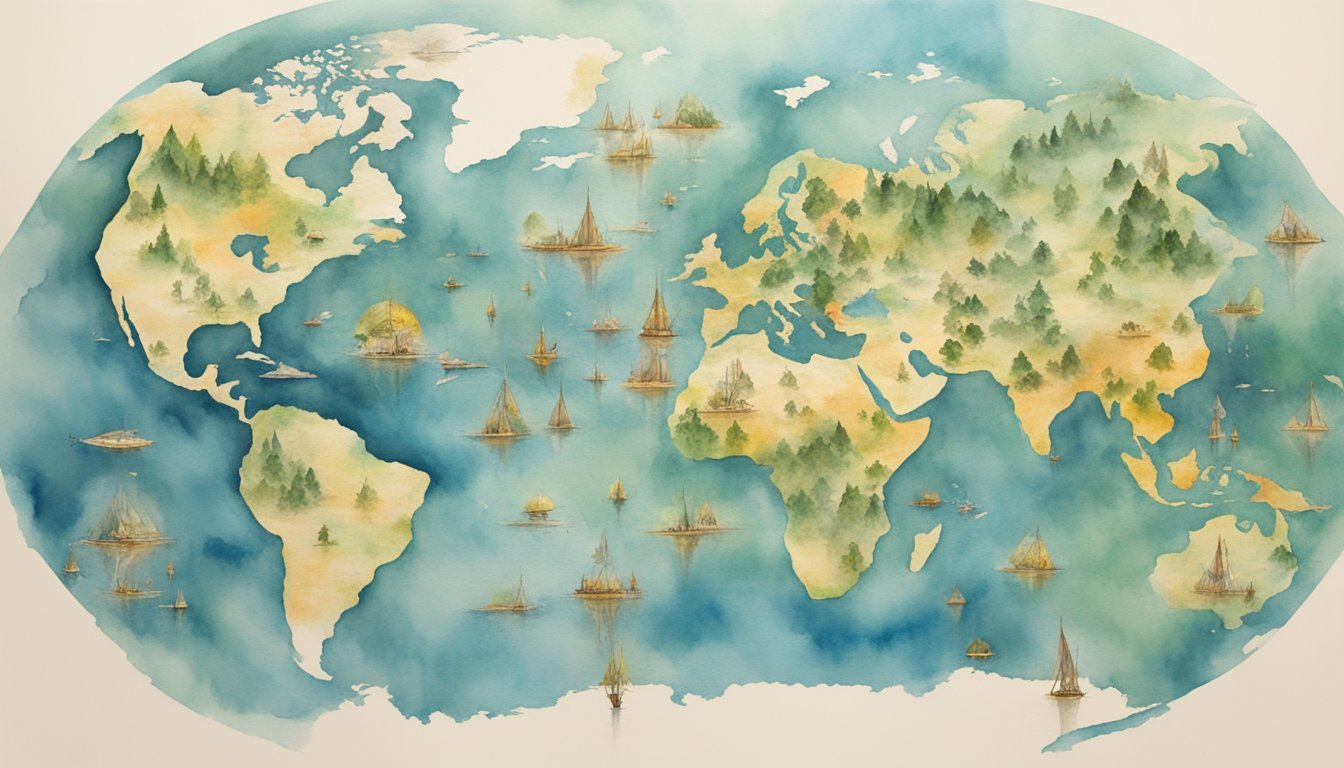Origins of Human Ancestry
Tracing the lineage of modern humans is an intricate journey back in time to the heart of Africa, where the earliest chapters of human evolution were penned.
African Genesis
It is widely accepted by scientists that Africa is the birthplace of the Homo sapiens species, the branch of the hominin family tree to which all humans today belong. Genetic and fossil evidence points to a lineage that began to emerge around 200,000 to 300,000 years ago. Key evidence for this African Genesis includes fossils and genomic data which indicate a rich tapestry of human ancestry rooted deeply in this continent.
Notable finds like the Omo remains in Ethiopia and the skulls from Herto have provided essential clues, enabling researchers to construct a timeline of early human development. These finds corroborate the hypothesis that modern human diversity stems from these ancient African populations.
Australopithecus to Homo
The journey from Australopithecus, a genus of hominins that walked the earth over 3 million years ago, to the genus Homo, which encompasses modern humans, presents a transformative evolutionary saga. Key transitional fossils like “Lucy” from Ethiopia, belonging to the species Australopithecus afarensis, highlight crucial adaptations like bipedalism, a steppingstone in human evolution.
Later, species such as Australopithecus garhi, discovered in Ethiopia, display traits hinting at a lineage leaning more towards the Homo genus. The first representatives of the Homo family such as Homo habilis show significant advancements with evidence of tool use, larger brain size, and changes in jaw structure and teeth. The lineage from Afric’s Australopithecus to Homo sapiens is littered with fossil evidence that reveals a gradual, yet profound, shift in the capabilities and morphology of early human ancestors.
Discoveries at sites like Kenya have provided glimpses into the lives of these ancestors, their environments, and adaptations which enabled them to eventually give rise to the species all humans call their own today.
Evolution of Traits and Behaviors

Throughout their history, humans have developed remarkable physiological and psychological traits linked to their survival and the complex societies they’ve built.
Bipedalism and Brain Development
Humans stand out in the animal kingdom with their upright posture and bipedal locomotion, which refers to walking on two legs. This evolutionary leap has significant implications for both the structure of human bodies and their brains. Bipedalism freed up the hands for carrying tools and using them for various tasks, while brain size in the genus Homo increased notably over time, suggesting a link between walking on two legs and complex mental processes.
- Where it started: Evidence of bipedalism first appears with Australopithecus, an early ancestor of humans, and continues with species like Homo erectus.
- Brain development: Bipedalism is associated with a shift in how the brain processes movement and balance, eventually contributing to advancements in technology and civilization.
Use of Tools and Fire
The use of tools and control of fire are significant milestones in human history that reflect both physical and cognitive evolution. Early humans shaped stones into cutting and scraping tools, indicating an understanding of how to manipulate materials to aid in tasks such as preparing food and making shelters.
- First tools: The creation and use of stone tools date back to about 2.5 million years ago.
As for fire, its controlled use for cooking food led to changes in diet, which some believe had pivotal effects on human health and socialization.
- Innovative behaviors: Controlling fire not only contributed to diet but also to social and cultural activities, warming, and protection.
Language and Culture
The development of language is a hallmark of human evolution. It allowed the transmission of complex ideas, collective learning, and the formation of cultures. This communication ability has resulted in an incredibly diverse range of languages and cultural practices around the world.
- Cognitive leap: The leap to complex language use is linked to changes in both DNA and brain structure.
Culture encompasses not just language but also the sharing of technology, social structures, art, and collective behaviors, shaping the civilizations we see today.
- Cultural artifacts: Discoveries of early art and artifacts provide a lens through which scientists examine past cultures and behaviors.
Global Dispersal and Diversification

This section delves into the vast journey humanity has taken from its origins in Africa to becoming a global species. It’s an epic story of movement, adaptation, and survival punctuated by both triumphs and tragedies.
Out of Africa and Into Eurasia
Humans first left Africa around 60,000 years ago, embarking on a monumental journey that would take them across Eurasia. Discoveries like the 300,000-year-old Homo sapiens remains at Jebel Irhoud underscore the complexity of the migration. Genetic evidence and ancient artifacts point to a corridor through the Middle East that served as the gateway to new lands.
Regional Development and Isolation
Once in Eurasia, groups of humans adapted to diverse environments, growing into distinct populations. In Southeast Asia, for instance, an isolated group developed into what we today call Homo floresiensis, found on the island of Flores. Meanwhile, China and India saw the growth of significant populations that contributed to human diversity.
Ancient Interactions and Extinctions
As the planet’s climate changed, humans continued to adapt, albeit with varying levels of success. The arrival of modern humans into regions like Australia led to interactions with local species, which sometimes resulted in extinctions. Social life grew complex as groups met and mingled, sharing genetic material and cultural practices. Ancient DNA evidence shows just how much these encounters shaped the human family tree.

